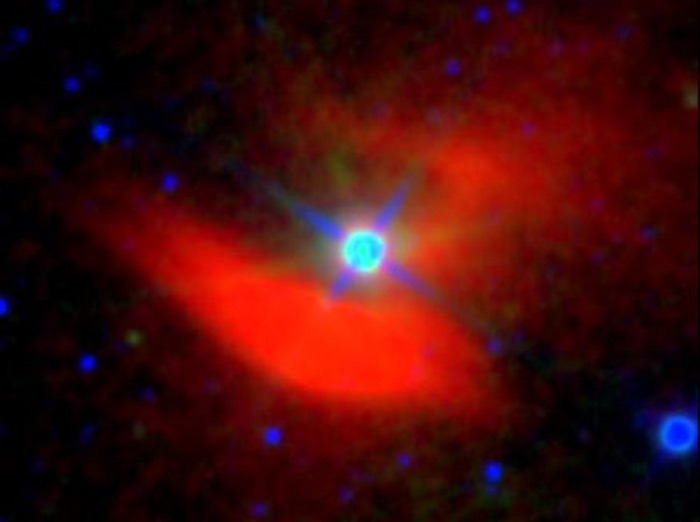.

48 Librae - Trail runs cold on alien hotspots, for now
.
A search of 100,000 galaxies for signs of highly advanced extraterrestrial life, carried out by researchers in the US, has found no evidence that they harbour advanced civilizations. Scouring through observations from NASA's WISE orbiting observatory, the researchers looked for unusually high amounts of mid-infrared radiation, which could mark out a colonized galaxy. The research is a significant expansion of previous work, which only studied about 100 galaxies. Although the team has not found any obvious signs of advanced life just yet, it has come across some puzzling new sources of mid-infrared radiation that need further study.
In 1960 the eminent physicist Freeman Dyson suggested that highly advanced alien civilizations beyond the solar system could be detected by the inevitable waste heat that they would produce in the form of mid-infrared emissions. He reasoned that such civilizations would have developed technologies that extracted useful energy from starlight by converting it into mid-infrared radiation. In a paper published in the journal Science, Dyson proposed that "a search for point sources of infrared radiation be attempted, either independently or in conjunction with the search for artificial radio emissions". But such searches were only made possible once space-based telescopes like WISE were developed.
Hot on ET's heels
Together with colleagues in the US, Jason Wright of Penn State University began the so-called Glimpsing Heat from Alien Technologies Survey (G-HAT), which makes use of WISE. "Whether an advanced spacefaring civilization uses the large amounts of energy from its galaxy's stars to power computers, spaceflight, communication or something we can't yet imagine, fundamental thermodynamics tells us that this energy must be radiated away as heat in the mid-infrared wavelengths," explains Wright, adding that this "same basic physics causes your computer to radiate heat while it is turned on".
Team member Roger Griffith, also at Penn State University, combed the entire WISE catalogue of detections – nearly 100 million entries – for objects consistent with galaxies emitting too much mid-infrared radiation. He then individually examined and categorized around 100,000 of the most promising galaxy images. The researchers' extensive search did not throw up any obvious candidates for an alien civilization reprocessing more than 85% of its starlight into the mid-infrared wavelength. But they did find about 50 galaxies that have unusually high levels of mid-infrared radiation. "Our follow-up studies of those galaxies may reveal if the origin of their radiation results from natural astronomical processes or if it could indicate the presence of a highly advanced civilization," says Wright.
In any case, the very fact that the extensive search did not find any colonized galaxies is curious in itself. Many of these galaxies are billions of years old, giving plenty of time for technologically advanced civilizations to form and establish. "Either they don't exist, or they don't yet use enough energy for us to recognize them," says Wright.
WISE curiosities
"Once we had identified the best candidates for alien-filled galaxies, we had to determine whether they were new discoveries that needed follow-up study or well-known objects that had a lot of mid-infrared emission for some natural reason," says Matthew Povich, who is part of the G-HAT team and is based at the California State Polytechnic University in Pomona. All told, the researchers found about half a dozen objects that were both unexpected and potentially interesting to study in the future to determine exactly which natural astronomical phenomena may be causing the results.
Among the discoveries within our own Milky Way galaxy, the team spotted a bright nebula around the nearby star "48 Librae", and a cluster of objects easily detected by WISE in a patch of sky that appears totally black when viewed only in the visible spectrum. "This cluster is probably a group of very young stars forming inside a previously undiscovered molecular cloud, and the 48 Librae nebula is apparently caused by a huge cloud of dust around the star, but both deserve much more careful study," says Povich.
Wright believes that more careful future observations of light from galaxies with higher-than-expected mid-infrared emissions will "push our sensitivity to alien technology down to much lower levels, and to better distinguish heat resulting from natural astronomical sources from heat produced by advanced technologies. This pilot study is just the beginning".
Quelle: physicsworld
4200 Views
